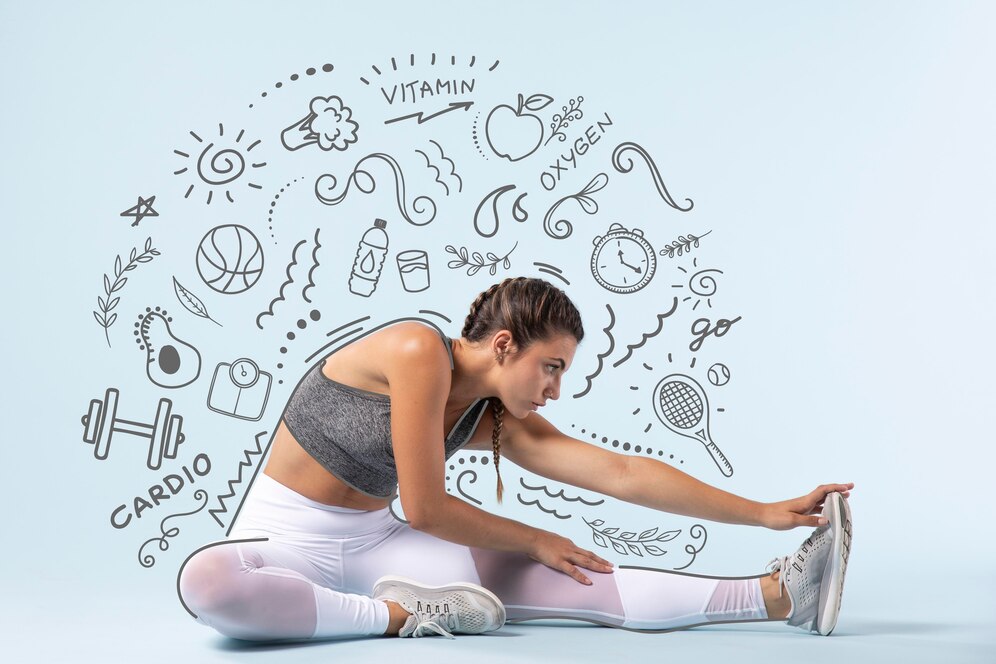As we age, maintaining a healthy lifestyle becomes even more important. With the right approach to exercise and nutrition, we can enhance our quality of life, boost energy levels, and minimize the risk of chronic diseases. In this blog post, we’ll explore how to build a healthy aging routine that incorporates both exercise and nutrition, helping you feel your best at every stage of life.
1. The Importance of Exercise for Healthy Aging
Exercise is one of the most effective tools for healthy aging. As we age, our muscle mass, bone density, and cardiovascular health can decline, making regular physical activity essential. The benefits of exercise for older adults are far-reaching:
- Improves cardiovascular health: Regular physical activity helps keep your heart and blood vessels healthy, reducing the risk of heart disease and stroke.
- Maintains muscle mass and strength: Strength training exercises help preserve muscle mass, preventing the loss of mobility and functional independence.
- Boosts mood and mental health: Exercise stimulates the release of endorphins, which can reduce stress, anxiety, and depression, improving overall well-being.
- Enhances flexibility and balance: Incorporating stretching and balance exercises reduces the risk of falls and injuries.
Best Exercises for Healthy Aging:
- Strength Training: Resistance exercises, such as weightlifting or using resistance bands, help build muscle and maintain bone density.
- Aerobic Exercise: Walking, swimming, or cycling are excellent for cardiovascular health.
- Flexibility and Balance: Yoga, Pilates, or tai chi can improve flexibility and balance, reducing the risk of falls.
- Low-Impact Activities: For those with joint pain, low-impact exercises like water aerobics or cycling are ideal.
2. The Role of Nutrition in Healthy Aging
Nutrition plays a key role in healthy aging, providing the body with the nutrients it needs to function optimally. A balanced diet helps maintain a healthy weight, supports the immune system, and can even slow the aging process.
Key Nutrients for Healthy Aging:
- Protein: Adequate protein intake helps preserve muscle mass and repair tissues, which is vital as you age.
- Fiber: A high-fiber diet improves digestion, reduces the risk of heart disease, and helps manage weight.
- Healthy Fats: Omega-3 fatty acids, found in foods like fish, nuts, and seeds, support brain health and reduce inflammation.
- Calcium and Vitamin D: These nutrients are essential for maintaining strong bones and preventing osteoporosis.
- Antioxidants: Fruits and vegetables rich in antioxidants, like berries, spinach, and kale, protect the body from oxidative stress and inflammation.
Building a Nutrient-Dense Diet:
- Start with a variety of fruits and vegetables: Aim to fill half of your plate with colorful, nutrient-rich produce. These foods are high in vitamins, minerals, and fiber.
- Include whole grains: Choose whole grains such as brown rice, quinoa, and oats to support digestive health and provide sustained energy.
- Lean proteins: Incorporate lean sources of protein like chicken, turkey, tofu, and legumes to support muscle health.
- Limit processed foods: Minimize the intake of sugary, salty, and processed foods, which can contribute to weight gain, high blood pressure, and other health issues.
3. Creating a Balanced Routine for Healthy Aging
Building a healthy aging routine requires integrating both exercise and nutrition into your daily life. Here’s how you can create a sustainable routine:
1. Start Slow and Progress Gradually
If you’re new to exercise, start with low-impact activities like walking or stretching and gradually increase the intensity as your fitness level improves.
2. Make Exercise a Habit
Aim for at least 150 minutes of moderate-intensity exercise each week, broken down into manageable sessions. Consistency is key to reaping the long-term benefits of exercise.
3. Meal Prep for Success
Plan your meals ahead of time to ensure you have access to nutritious foods throughout the week. Focus on balanced meals with lean proteins, healthy fats, and plenty of vegetables.
4. Stay Hydrated
Drinking enough water is essential for maintaining healthy skin, digestion, and energy levels. Aim for 8-10 cups of water a day, or more if you’re exercising regularly.
5. Prioritize Sleep
Quality sleep is crucial for recovery and overall well-being. Aim for 7-9 hours of sleep each night to support your exercise efforts and allow your body to repair and rejuvenate.
4. Consistency Is Key to Healthy Aging
The most important aspect of building a healthy aging routine is consistency. Both exercise and nutrition should be incorporated into your lifestyle in a way that’s manageable and enjoyable. Over time, these small, consistent changes will add up to significant improvements in your health, helping you age gracefully and with vitality.
Conclusion
Building a healthy aging routine with exercise and nutrition is essential for enhancing longevity and maintaining quality of life. By combining regular physical activity with a nutrient-rich diet, you can support your body’s natural aging process and improve both physical and mental well-being. Start small, stay consistent, and embrace these healthy habits for a fulfilling, active life at any age.


